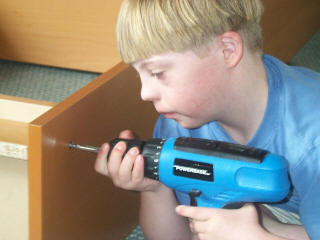
Birth defect
A birth defect, also known as a congenital disorder, is an abnormal condition that is present at birth regardless of its cause.[3] Birth defects may result in disabilities that may be physical, intellectual, or developmental.[3] The disabilities can range from mild to severe.[7] Birth defects are divided into two main types: structural disorders in which problems are seen with the shape of a body part and functional disorders in which problems exist with how a body part works.[4] Functional disorders include metabolic and degenerative disorders.[4] Some birth defects include both structural and functional disorders.[4]
This article is about congenital disorders in humans. For other organisms, see Teratology.Birth defect
Congenital disorder, congenital disease, congenital deformity, congenital anomaly[1]
Present at birth[3]
Structural, functional[4]
Genetics, exposure to certain medications or chemicals, certain infections during pregnancy[5]
Therapy, medication, surgery, assistive technology[8]
3% of newborns (US)[2]
628,000 (2015)[9]
Birth defects may result from genetic or chromosomal disorders, exposure to certain medications or chemicals, or certain infections during pregnancy.[5] Risk factors include folate deficiency, drinking alcohol or smoking during pregnancy, poorly controlled diabetes, and a mother over the age of 35 years old.[6][7] Many are believed to involve multiple factors.[7] Birth defects may be visible at birth or diagnosed by screening tests.[10] A number of defects can be detected before birth by different prenatal tests.[10]
Treatment varies depending on the defect in question.[8] This may include therapy, medication, surgery, or assistive technology.[8] Birth defects affected about 96 million people as of 2015.[11] In the United States, they occur in about 3% of newborns.[2] They resulted in about 628,000 deaths in 2015, down from 751,000 in 1990.[9][12] The types with the greatest numbers of deaths are congenital heart disease (303,000), followed by neural tube defects (65,000).[9]
Prevention[edit]
Folate supplements decrease the risk of neural tube defects. Tentative evidence supports the role of L-arginine in decreasing the risk of intrauterine growth restriction.[98]